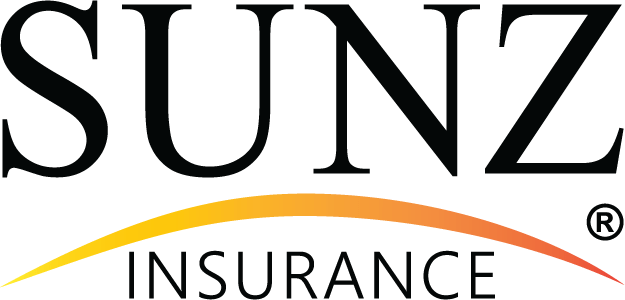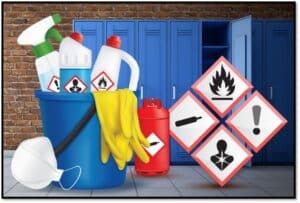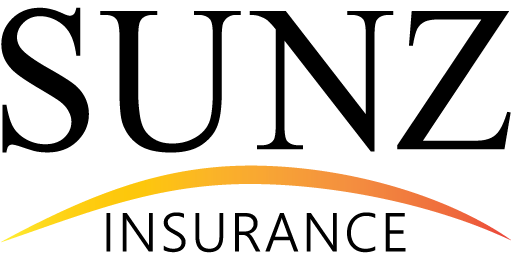Safety Data Sheets (SDS) & Training are key to be HAZCOM Injury Free
The SUNZ Insurance Risk Management Team is dedicated to enhancing safety and wellness practices for our insureds. We want to provide you with the tools, knowledge, and resources to protect your employees from exposure to chemical burns, irritation, and toxic substances. Chemical hazards and toxic substances can lead to a variety of health hazards such as irritation, carcinogenicity, and sensitization. According to OSHA, ensuring chemical safety in the workplace requires that employees know and understand the information, identities, and hazards of the chemicals. OSHA’s Hazard Communication Standard (HCS) requires the development and dissemination of information.
December 14, 2023
By the Risk Management Team
According to OSHA. every day, American workers use tens of thousands of chemicals and only a small number are regulated. This results in workers suffering more than 190,000 illnesses and 50,000 deaths annually related to chemical exposures. Failure to follow proper chemical safety procedures and protocols can have life altering effects including death.
According to the U.S. Department of Labor (DOL), an exposure to a dangerous toxin at an Alabama chemical manufacturing plant caused the death of two workers and long-lasting PTSD and illness of another. The chemical manufacturing plant failed to institute critical safe work practices required under OSHA’s Process Safety Management Standard and ensure workers used appropriate respiratory protection. They face $232,000 in penalties for 10 violations.
For the past 10 years, OSHA’s Hazard Communication Standard (OSHA 29 CFR 1910.1200) has been among the top five most frequently cited standards following workplace inspections. The most-cited parts of the standard address having a documented program, conducting effective training, and making up-to-date safety data sheets available to employees.
According to the Centers of Disease Control and Prevention (CDC), there are different routes to being exposed to chemicals that can be hazardous. Routes to Chemical Exposure:
- Inhalation – Breathing gases, vapors, particulates, dust, or mist.
- Ingestion – Accidentally eating or drinking hazardous substances.
- Absorption – Permeation or absorbing a substance through the skin without protection such as gloves.
- Injection – Piercing or penetration of skin.
Chemicals exists in a variety of forms such as liquids, stored gasses, and particles like dust, powders, sprays, and mists. Any chemical that can potentially cause harm is considered hazardous. This means that they can:
- Irritate the eyes, skin, and respiratory tract.
- Are cancer-causing.
- Are corrosive.
- Can explode or cause fire.
- Create low oxygen environments.
Chemical Injury Prevention
The Occupational Safety and Health Administration (OSHA) estimates that about thirty-two million workers in 3.5 million workplaces are regularly exposed to hazardous chemicals. Employees have the right to know about hazardous chemicals and products in the workplace and how to protect themselves from exposure. The following components are from the Hazard Communication (HazCom) Program:
- Learn the standard – It is the Employer or contractor’s responsibility to understand the standard and become familiar with their responsibilities.
- Develop a chemical inventory list – Employers must have a list of all hazardous chemicals on the job site. Responsibility for recording the name and locations of chemicals in the workplace along with manufacturer’s names, address, and phone numbers fall on employers.
- Label all containers – Chemical containers must be labeled with the following: Product identifier, potential hazards linked to the chemical, and the manufacture’s name, address, and phone number. Makers and importers of chemicals must provide a label showing a signal word, pictogram, and statement for each hazard class.
- Obtain a safety data sheet (SDS) – Chemical manufacturers, distributors, or importers must provide an SDS in uniform 016-seciton format detailing product’s hazards. Contact the manufacturer if a shipment does not come with an SDS.
- Develop a written program – OSHA recommends listing hazards by product identifier to track SDS and label each chemical. Employers must communicate in writing how they manage all hazardous chemicals in the workplace.
- Provide training – Employers must train employees about all potential chemical hazards in a language they understand. Training MUST occur before employees start work and whenever a new hazard is introduced in their work area.
During training, employers must communicate the following to their employees:
- How to spot hazardous chemicals
- What personal protections are provided.
- Whom to contact with a problem.
- What information is on labels and SDSs
- How to get access to SDSs
Brush up on more Chemical Hazard Safety with these additional resources:
| OSHA | Transitioning to Safer ChemicalsAccor Toolkit
Hazard Communication Standard HCA OSHA FactSheet – Steps to an Effective Hazard Communication Program for employers |
| CDC | Centers of Disease Control and Prevention – Chemical Hazards |
| NIOSH | NIOSH Pocket Guide to Chemical Hazards |
| IOSH Magazine | Back to Basics: Chemical Hazards |
| Washington Department of Labor & Industries | Chemical Safety Basics |
| Risk Management Center (RMC) | Visit the Risk Management Center (RMC) for eLearning Courses, Videos, Training Material, and Safety Information (English & Spanish versions available for many resources). |
For assistance with Chemical Hazard Safety or any other safety needs for your company, employees, or clients, contact the SUNZ Insurance Risk Management Team.
We are here to help!
About Sunz
We shine by providing nationwide ‘A-rated’ coverage to PEOs, staffing agencies, transportation companies, and large companies. It is vital for an effective operation and profitable workers’ compensation program to control the amount of a claim when it happens and manage it efficiently and successfully. We first place a strong emphasis on prevention which minimizes the risk for claims. Our team of loss prevention professionals will provide you with the tools needed to have a safe and productive work environment. Embrace the power to be different and contact us today: info@sunzinsurance.com




